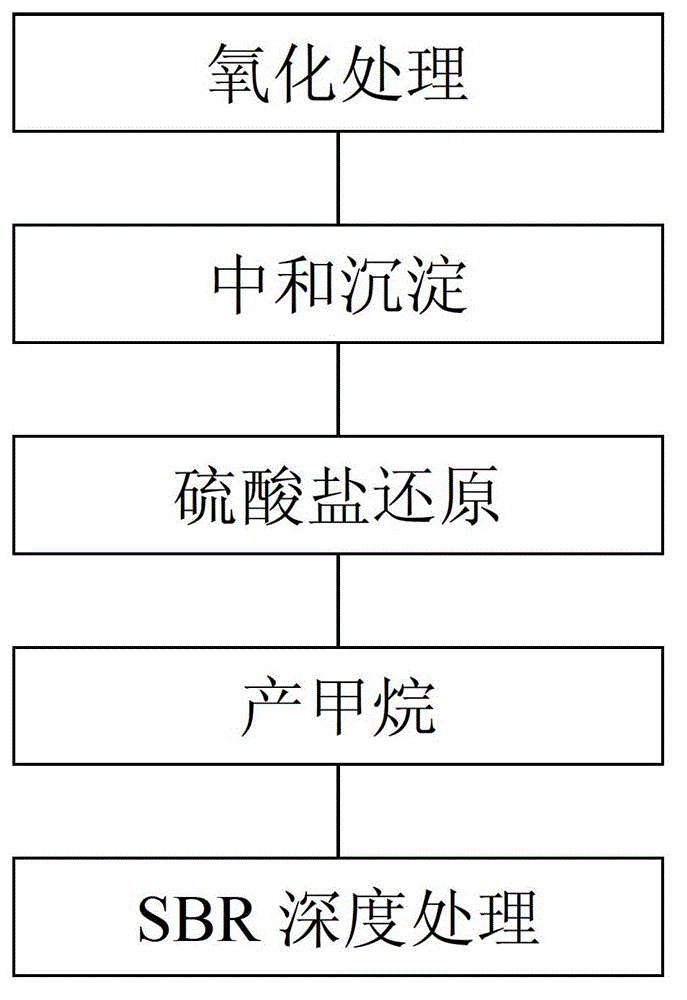Method for removing carbon, nitrogen and sulfur in waste water
A waste water, carbon and nitrogen technology, applied in the direction of chemical instruments and methods, waste fuel, oxidized water/sewage treatment, etc., can solve the problems of high cost of waste water treatment, secondary pollution, a large number of chemical agents, etc., to improve biodegradability, The effluent water quality meets the standard and the treatment effect is good
- Summary
- Abstract
- Description
- Claims
- Application Information
AI Technical Summary
Problems solved by technology
Method used
Image
Examples
Embodiment 1
[0020] The water quality parameters of the chemical fiber wastewater in this example are shown in Table 1.
[0021] project
scope
average
Chemical oxygen demand COD / (mg / L mg / L)
4316-4910
4636
Biochemical Oxygen Demand (BOD) 5 / (mg / L mg / L)
316-431
366
Biochemical Oxygen Demand / Chemical Oxygen Demand BOD 5 / COD
0.06-0.10
0.08
Ammonia nitrogen / (mg / L mg / L)
81-97
91
Sulphate / (mg / L mg / L)
3961-4366
4187
Nitrate nitrogen / (mg / L mg / L)
2.8-4.7
4.1
Total Nitrogen / (mg / L mg / L)
118-219
179
pH
2.8-3.5
3.1
[0022](1) Add 500 mg / L of ferrous sulfate and 800 mg / L of hydrogen peroxide (concentration: 30%) to the waste water, and control the speed of the mixer at 150 rpm to ensure that the waste water and the reaction reagent are mixed evenly. After 25 minutes of hydraulic retention time, the primary effluent was obt...
PUM
| Property | Measurement | Unit |
|---|---|---|
| chemical oxygen demand (mass) | aaaaa | aaaaa |
| clearance rate | aaaaa | aaaaa |
Abstract
Description
Claims
Application Information
 Login to View More
Login to View More - R&D
- Intellectual Property
- Life Sciences
- Materials
- Tech Scout
- Unparalleled Data Quality
- Higher Quality Content
- 60% Fewer Hallucinations
Browse by: Latest US Patents, China's latest patents, Technical Efficacy Thesaurus, Application Domain, Technology Topic, Popular Technical Reports.
© 2025 PatSnap. All rights reserved.Legal|Privacy policy|Modern Slavery Act Transparency Statement|Sitemap|About US| Contact US: help@patsnap.com

